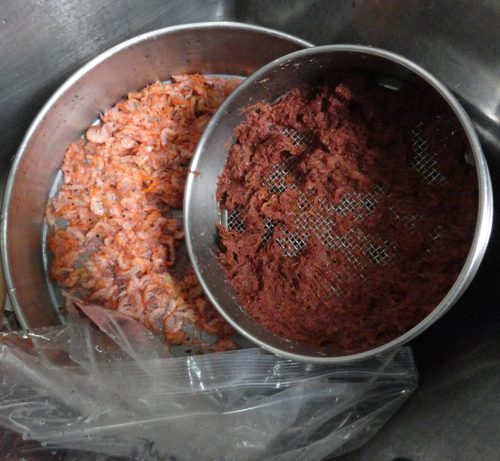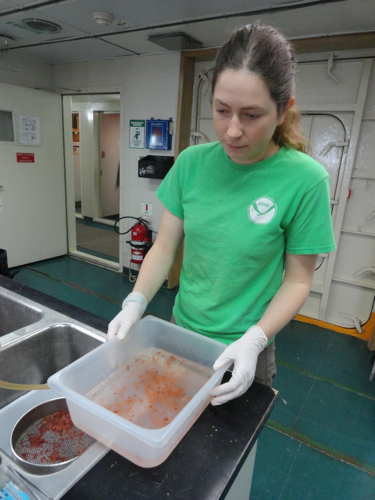I’m back in Punta Arenas; we arrived last night while I was sleeping. It’s a rainy, gray day. I’ll be moving off the ship tomorrow and in the mean time need to return my ECW(abbreviation) Extreme Cold Weather clothing gear and get repacked and organized for my flight home on 3-14. I’m really excited to get home, but am also feeling a bit blue that my adventure is drawing to an end. I got off the ship for a walk at about 8:30 this morning and met up with 3 stray dogs who followed me around for about an hour. By the time I got back to the ship I was drenched.
Different people are heading home on different days and I’ll be sorry to see them go. I had a chance to talk a bit with the NOAA scientists who have been studying seals at Cape Shirreff on Livingston Island since early November. The group includes Doug Krause, Kevin Pedigo, McKenzie Mudge, Jay Wright and Nicole Cook. I was interested to learn that McKenzie Mudge, one of the scientists on the project, has parents who live in State College, PA about 5 houses away from the house I grew up in on Franklin Street! McKenzie has been very generous about sharing her photos with those of us on the ship.


The scientists have been analyzing diets from fur seals and leopard seals and I’ve had the opportunity to observe them working in the lab while they've been on the ship. Primarily I've seen them sorting through seal scat that they collected while on Livingston Island. The scat samples are composed largely of krill, which is why they have a pinkish color. The interest in the seals’ diet is part of NOAA’s Antarctic Marine Living Resources (AMLR) program, designed to conserve and manage the marine living resources around Antarctica. The program provides data on the region’s top predators, including seals and penguins.






Much of the research looks at the entire ecosystem with a focus on krill. Krill makes up the foundation of the Southern Ocean food chain, so understanding population changes is critical. The scientists are interested in determining whether changes in populations of krill and other species may be linked to climate change or warming of the peninsula region. NOAA colleagues on King George Island at the Copacabana field camp (where we stopped on 3-7-2012) were among the first to link climate change with declines in krill and penguin populations. That study dates back to the late 1970s.
My return trip on the LMG has been unusual in that I've gotten to help put in one field camp and take out another. Typically the journey home from Palmer Station doesn't involve the stops we've made and I feel lucky about these extra opportunities!


Comments